







FOOD: $185permonthforhealthyfood optionsformemberswithaqualifying chronichealthcondition
VISION: $300forprogressivelenses;upto $100peryearforadditionallenscoatings



SanfordHealthwouldliketoinviteyourchildtoparticipateinascreeningresearchstudy. ThroughSanfordPLEDGE,wehopetoidentifychildrenathigherriskofdevelopingtype1 diabetes(T1D)andceliacdiseaseandinterveneearlytopreventseriousillness.
Yourchildmayqualifytojointhestudyifthey:
Childrenages6-17whohaveasiblingwithT1DorT1Dantibodies mayalsojointhestudy.
AskyourproviderorcareteamaboutthePLEDGEscreeningstudy. Visitsanfordhealth .org/PLEDGEorcall(877)878-4825to jointhefreestudyorlearnmoreaboutPLEDGE.
A BEMIDJI PIONEER PUBLICATION
802 Paul Bunyan Dr. SE, Suite 19 Bemidji, MN 56601 218-333-9200
STAFF
Editor
Daltyn Lofstrom
Creative Director
Mollie Burlingame
Advertising
Lindsay Nygren
Business Larisa Severson
ADMINISTRATION
Advertising Director
Todd Keute
Editor
Annalise Braught
Controller Tammie Brooks
TO ADVERTISE 218-333-9200
James Hanson jhanson@bemidjipioneer.com
Questions and Feedback
Email inBemidji at inmagazine@bemidjipioneer.com
Volume 11, Issue 3
Copyright © 2024 Bemidji Pioneer in Bemidji
All rights reserved. Although some parts of this publication may be reproduced and reprinted, we require that prior permission be obtained.

ON THE COVER
Al Belleveau installs Tim Nelsen’s “Flying V Guitar” sculpture as part of the 2024 Bemidji Sculpture Walk. Photo by Annalise Braught.

inBemidji’s mission is to be Bemidji’s and the surrounding area’s local lifestyle magazine. We strive to enhance the quality of life for the people of the Bemidji area by informing them about all of the amazing people who live in our community. Our concentration is on everything local: fashion, food, health, and most importantly, unique individuals and stories.
We strive to maintain a high level of integrity as an inspiring, local media presence for our readers and provide advertisers with a high-quality, effective marketing medium.
Read the award-winning inBemidji online! Visit bemidjipioneer.com , then click on inBemidji near the bottom of the page.
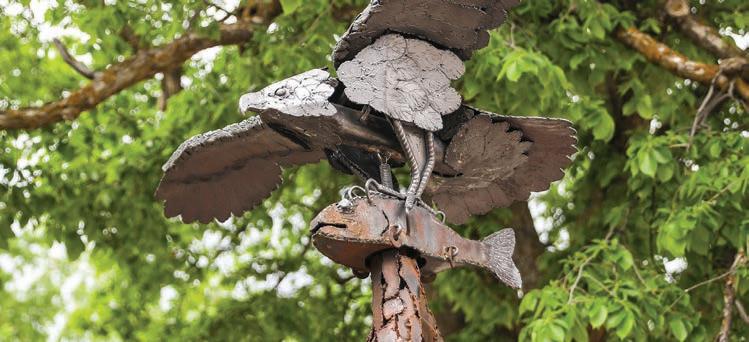
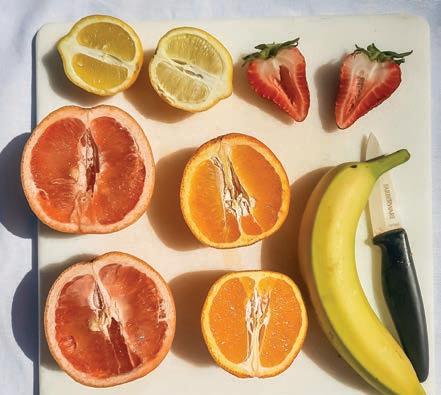
Putting together a marching band performance proves to be quite the process at Bemidji High School.
Sculpture Walk turns 25
For a quarter of a century, various sculptures have caught the eyes of passersby as part of the Bemidji Sculpture Walk.
This issue of inBemidji highlights sips of summer as refreshing summer cocktails are on the menu.
Retired dentist and flight instructor Marsh Muirhead shares his story as part of inBemidji’s person-on-the-street interview series.
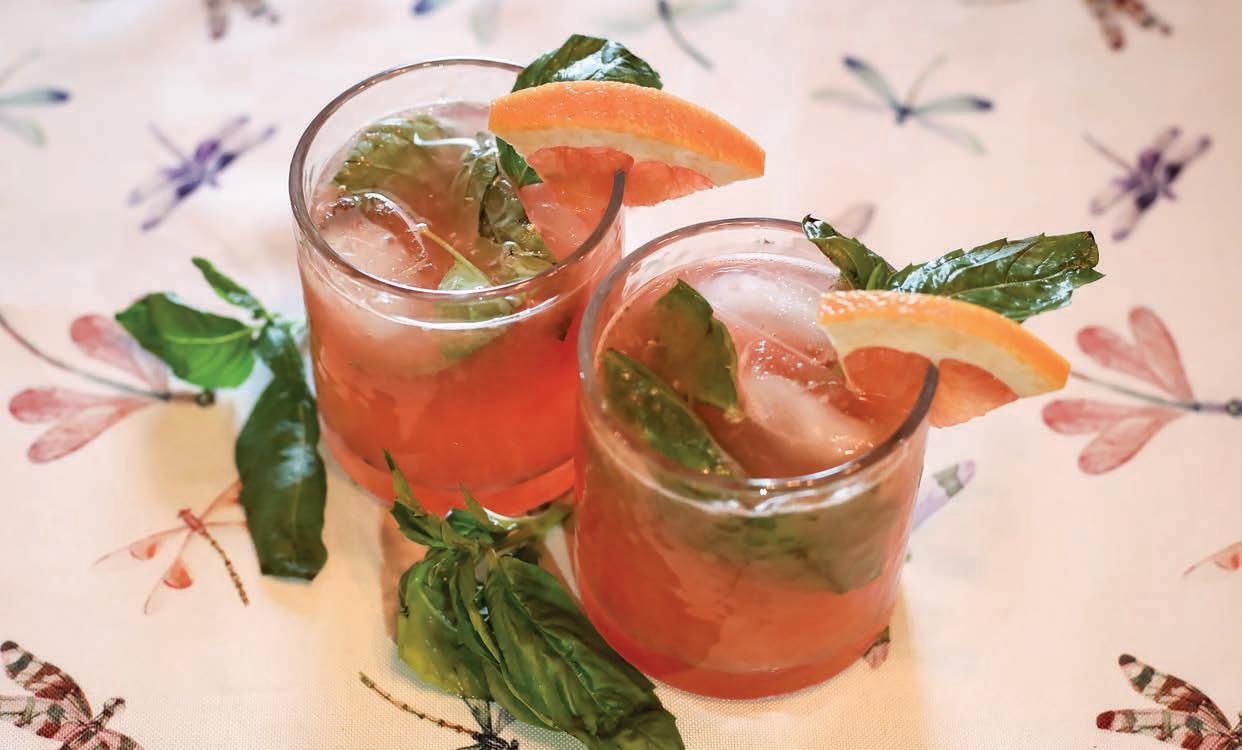

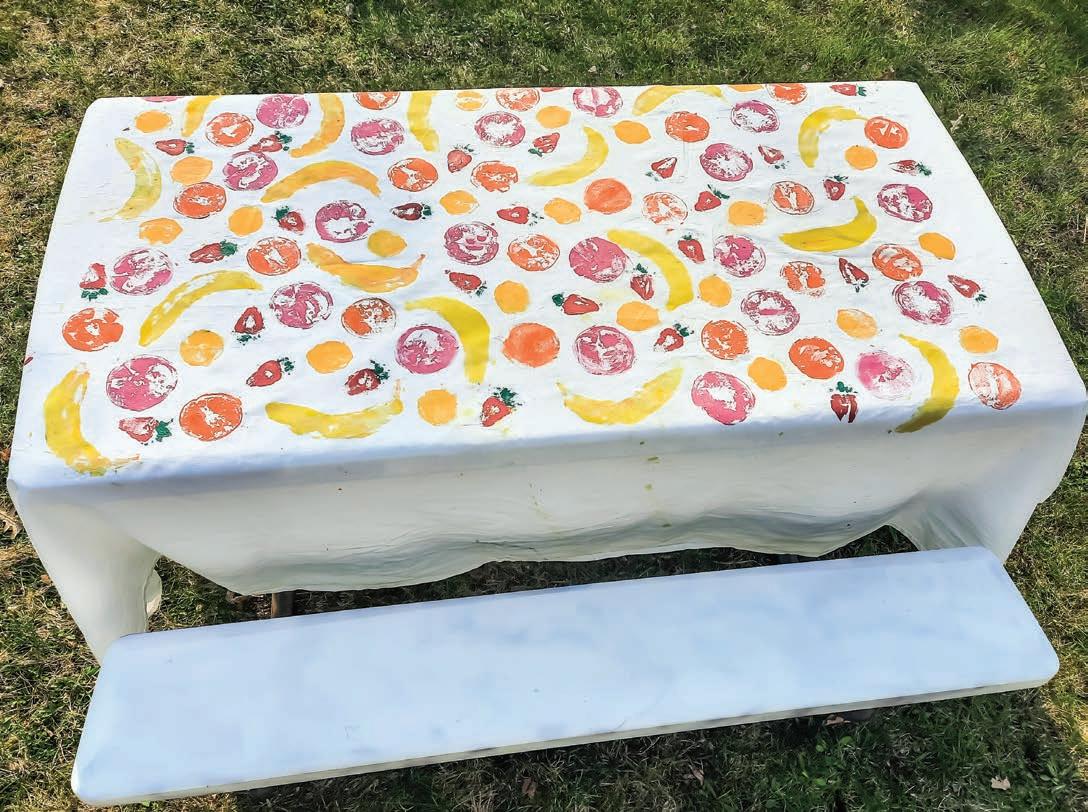


 by Carley Swanson-Garro inBemidji staff
by Carley Swanson-Garro inBemidji staff
This DIY fruit printed tablecloth is a great way to use extra produce that you don’t want to go to waste. Kids will enjoy unleashing their creative side while completing this fun summer activity and the finished product is perfect for a picnic at the lake.


56th Watermark Art Festival


Saturday, 20 & 21

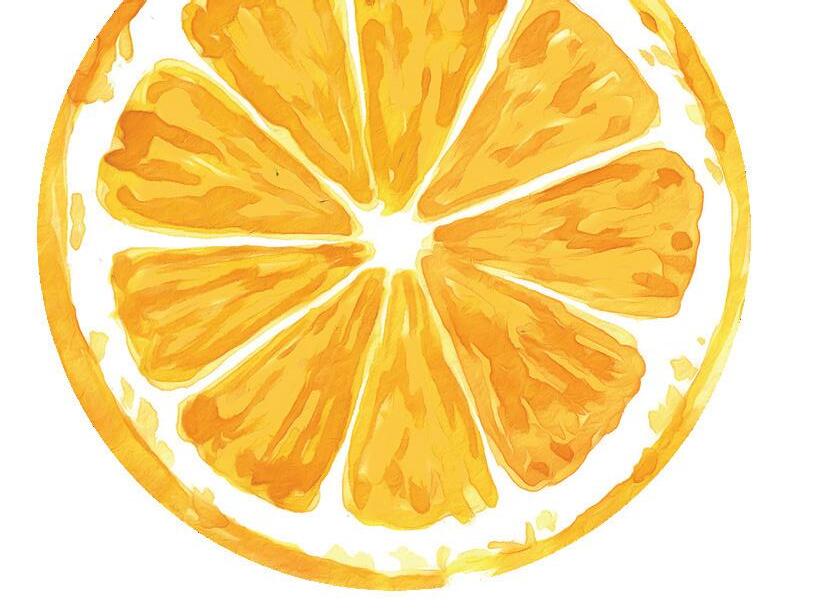


• Kitchen knife
• Cardboard or newspaper (optional)

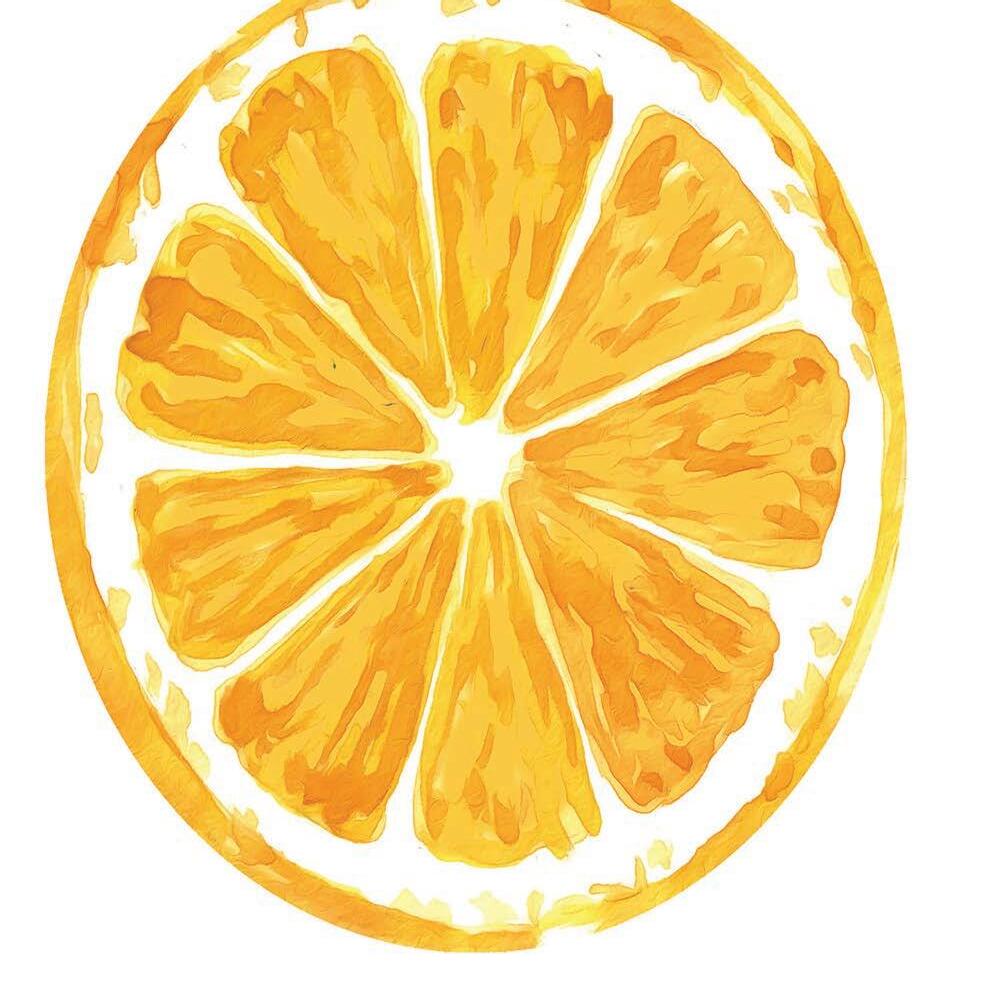
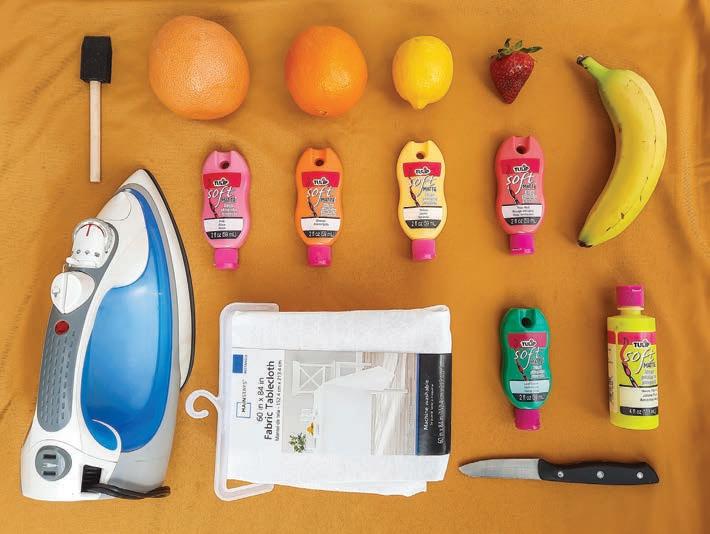

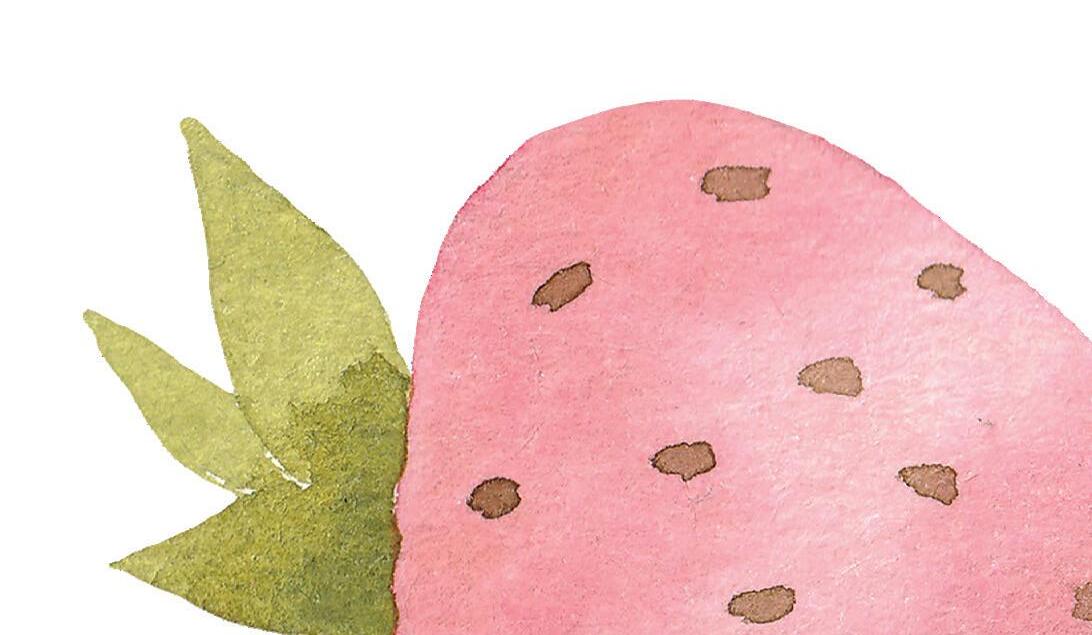


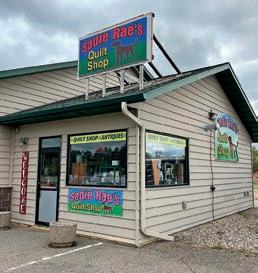
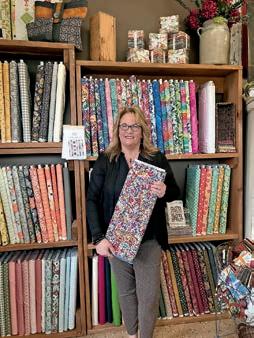


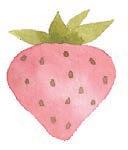
Wash tablecloth and lay it flat on a solid surface. To prevent paint spills, place cardboard or newspaper under the tablecloth.
Step Two:
Cut fruits in half lengthwise. Adults should help children with this step.
Step Three:
Using the paintbrushes, apply a layer of fabric paint to the inside of each fruit.



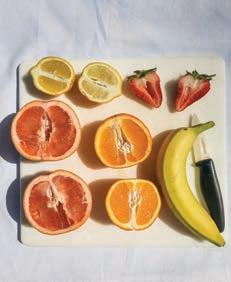
Step Four:
Firmly press the painted side of the fruits onto the tablecloth and lift straight up to remove. Alternate fruits to create a pattern.
Step Five:

Step One: 2 3 4 6

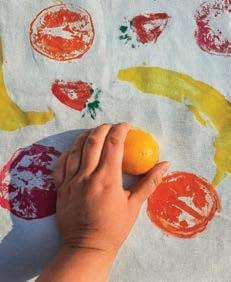
Let paint dry for 24 to 72 hours. Check the instructions on the paint for optimal drying time.
Step Six:
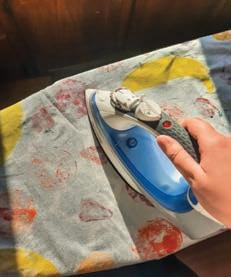
To set the paint, iron the tablecloth on the side without paint for three to five minutes. Use the highest heat setting allowed for your fabric and do not use steam. Iron in small sections and keep the iron moving so the fabric does not scorch.


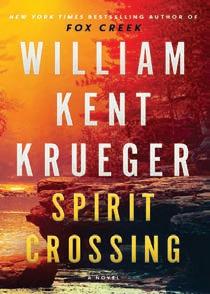




Minnesota boasts a host of its own authors and for this issue of inBemidji, Four Pines Bookstore of Bemidji provided some of the latest titles ideal for summertime.
Bunyan and Henry By Matt Cecil
Spirit Crossing By William
Kent KrugerWhere They Last Saw Her By Marcie
RendonWhere Wolves Don’t Die By
Anton TreuerFour Weekends and a Funeral By Ellie
Palmer
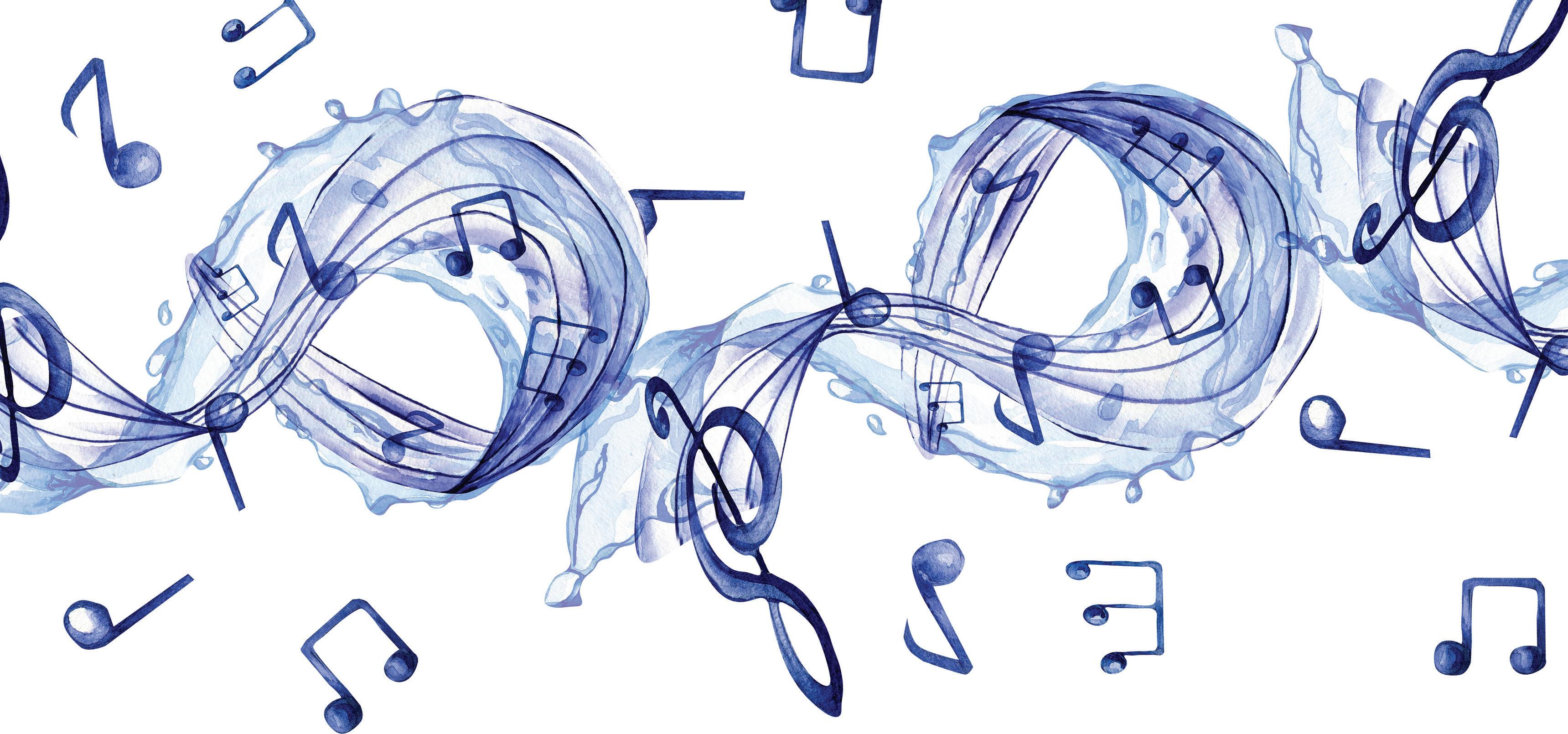

Crowds line both sides of Beltrami Avenue, waiting for the highlight of the Fourth of July parade – the 2023 Bemidji High School Marching Band, heralded by the sharp, steady notes of the drumline.
Uniformed marchers lead with the BHS banner, followed by the color guard. Zeke Graf, the head drum major, gives the count with a precise pattern, and the band breaks into the theme song from “Star Wars.”
In the next three and a half minutes, flags swirl and navy-andwhite uniform-clad marchers perform three movements of music. Zeke and assistant drum major Reed Kuzel conduct in unison, both in white uniforms. They march backward
by Sue Bruns special to inBemidjimuch of the time, always visible to the marchers. The tempo slows dramatically; the melody is ominous. Trumpeter Riley Winger performs a brief, crisp solo.
The tempo changes again with the third movement. The marchers perform well-rehearsed drills without missing a note, a step or a beat. Zeke and Reed conduct from opposite ends of the formation.
Then the music climaxes with a return to the familiar melody. The color guard – a team of 10 – flanks the band. The drum majors, now in front of the band, turn in unison and strike matching dramatic poses for the finale.
Applause erupts with calls from
family and friends – whistles, hoots, hollers. Band members stay poised, listen to the compelling beat of the snare drums, fall back into formation and march on. They’ll perform the show two more times in this two-mile parade.
The band’s three-and-a-half minutes of performing are the culmination of months of planning and weeks of learning music, perfecting the march and incorporating choreography into the routine. Paradegoers love the music, the drumline, the uniforms, the marching, the flag work, the poise and the precise patterns of the drum majors.
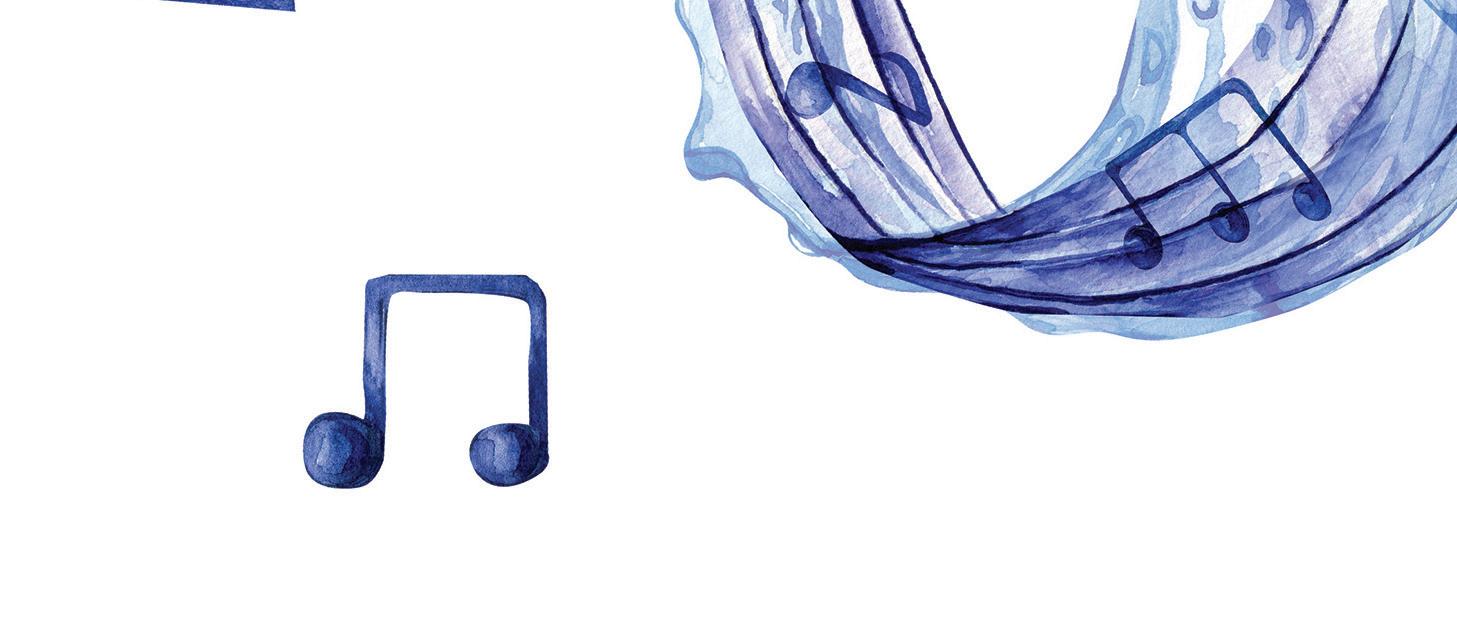
For the band, marching is not like any other musical performance. During concerts, musicians are mostly seated with the conductor standing in front of them. The audience is distant and applauds politely after each piece.
In marching band, the musicians are animated, possessed by the music, the marching, the drills. They must know their parts by heart and perform as one moving, breathing being. The audience is not distant; rather, the marching musicians move right through them.
Before practice begins
Building a show starts early in the school year. BHS band director Derek Wickum is thinking about the theme and music for next year’s show before the final performance of the current season.
Each year he tries new things: more complex music, professional choreography and crowd-pleasing themes like the 2011 show “1982” featuring music from Michael Jackson’s “Thriller” album; 2014’s “Blues Brothers,” the pirate show “Dead Men Tell No Tales” in 2018, and last year’s “Star Wars: The Force Awakens.”
The concepts are always good in his head, he says, but some come together better than others.
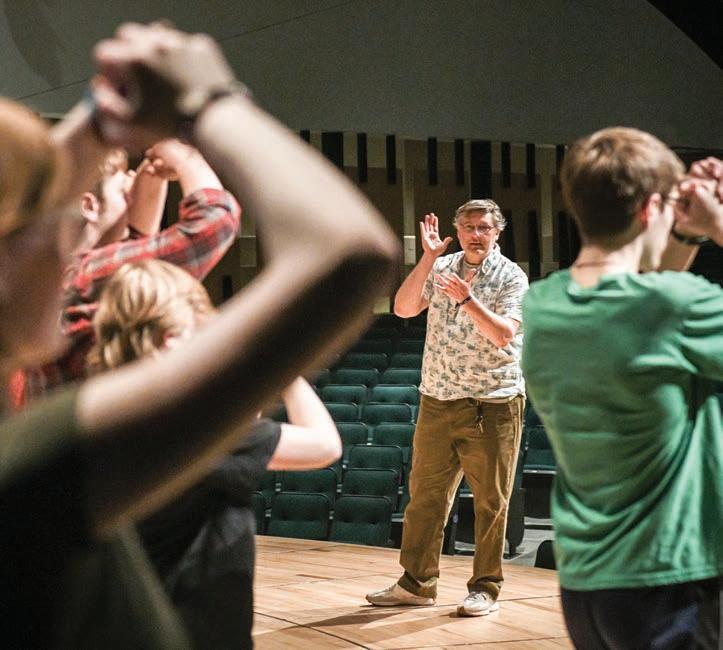


on how to walk in a grid using correct posture.







“The

He’s always wanted to try a Western theme, and by November 2023, he has ordered music by composer Ennio Morricone. Audiences will be familiar with the music from Clint Eastwood’s “Fistful of Dollars” and “The Good, the Bad, and the Ugly.”
By April 1, he’s done recruiting. “We’ll have about 70 to 73 people in the show this year,” he mentioned, up a few students from last year, but still not up to the prepandemic high of 117 members in 2019.
The color guard has most of its team in place and is working on costuming and props with a cowboy theme. They can practice flag work and technical aspects with coach Tyra Graham but won’t receive this year’s choreography for another month or more.
Derek has received the music, cut it and sent it to Aaron Hines in Las Vegas. Aaron, of AH Designs916, is a program designer with 25 years of experience and he will design the BHS show. His wife, Kimberly, will choreograph the color guard’s routine.
The next step? Cutting the musical score together. A parade show has an opener, then a slower movement or ballad, and finally a closer.
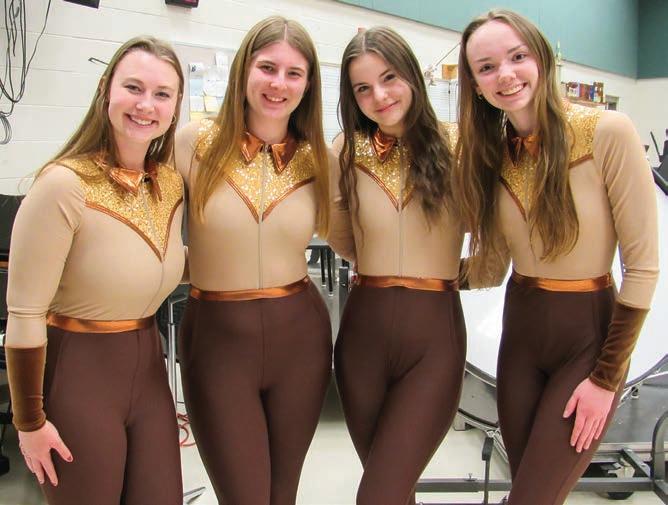





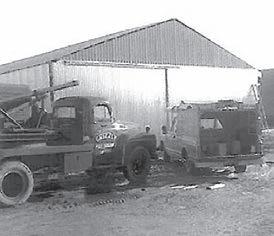

“The entire score should hit the fourminute mark,” Derek says. “You have to cut it so that people will still recognize the piece. You also have to be aware of staying in the same keys, so your chord progressions all match up when you’re going from part A to part B.”
His goal is always “to give the kids a show they’ll feel good about, help them achieve the highest they can achieve and keep giving them tools to make them successful.”
About 22 horn players are present at the first practice on April 15; others are involved in spring sports. Derek works with the winds in the band room as percussion coordinator Eric Sundeen runs the drumline practice in the Black Box.
Hour-and-a-half practices are held after school on Mondays and Tuesdays through the end of the school year. Then the intense three- to four-hour practices begin, five to six days a week.
Reed leads the warm-ups in the band room, which include breathing exercises and stretches. Musicians from four bands –from eighth grade through the three levels at BHS – form a new band today: the 2024 BHS Marching Band.
They meet other members of their section. Already they have two things in common – marching band and their instruments.
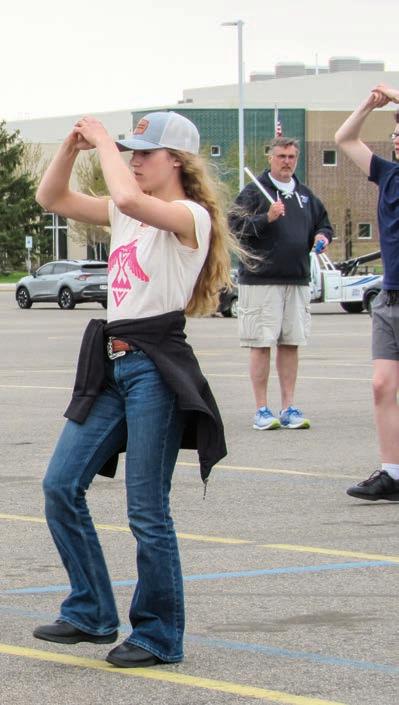
The weather is indecisive – gusty, overcast with spotty drizzle. Derek decides to try outdoor marching and says, “To the grid,” referring to a set of faded blue paint lines on the high school parking lot.
Outside, they form lines of five for their first marching lesson. About two-thirds of the marchers have some experience and automatically put their arms up, elbows bent, hands clasped, as if carrying an instrument.
“The pretend horns help with posture as we march,” Derek explains, reinforcing a tall torso and marching poise with shoulders back and chest out.
Derek demonstrates: “Push off from first position to the first step. Start with the left foot. Toe points in the direction you’re going.”
It’s more complicated than it looks. They do eight-count marches forward, blue line to blue line, focusing on the heel-totoe roll. The drum majors watch, assisting marchers who need more direction.
Derek calls out five accomplished marchers to demonstrate. “Watch how their knees and shoulders stay in line as they march.” Then the newbies practice doing likewise.




A gust of cold drizzle drives everyone inside. They continue the practice on the auditorium stage. In the smaller space, it’s easier to focus on the details of marching. There’s a lot of repetition.
At 4:30 p.m. Derek thanks the marchers for a good first practice and reminds them to bring their Dinkles (marching shoes) as they’ll start rehearsing the music tomorrow.
Before they leave, parent boosters Matt Graf and Gretchen Buxton give instructions about their twoweek fundraiser. Marching is an expensive activity with bus trips, some overnight stays and uniforms. They’re selling coffee from Heroes Rise, a local company that helps organizations raise money.
The marching band has gotten off to a good start. Derek Wickum and Eric Sundeen have worked together for about 20 years – basically since the start of competitive show-marching at BHS.
Before coming to BHS in 2001, Derek had directed the marching band in Northome for seven years. Back then, he says, they marched the way he had in high school: “Line ‘em up and go!”
Previous BHS band directors Earl Kerns and Terry Bradley had done traditional parade marching and some field shows, but by the late 1990s and early 2000s, high school marching bands in Minnesota had started to take moves from drum corps and field shows and adapt them to show-marching.
Eric, an adjunct professor of percussion at Bemidji State and former member of the Madison Scouts Drum and Bugle Corps, plays professionally and has performed internationally. He has customized the drum parts for this year’s show.




Coordinator
Drumline meets separately from winds for the first several practices. Eric listens as the drummers rehearse, interjecting comments and suggestions at the end of a section.
“The opener is pretty much done,” he says. “It’s light, repetitive, kind of like a horse’s gallop.” The comparison is fitting for the Western theme.
At the end of another section, he asks, “If we were playing to a metronome, what would you be hearing?”
A quick answer comes from one of the drummers: “We’re slowing down at the end.”
“That’s right,” Eric confirms, and follows with a comment that he is seeing many good things in their playing, “but we still need to pay attention to the details.” He points out that they’re not wearing the drums yet, “so now is the time to really listen.”



For two-mile parade routes, they’ll carry the heavy bass drums, snare drums, tenor quints, cymbals and marching bells. They’ll march with them and incorporate the drill movements while drumming.
The drumline is the heartbeat of the marching band.
The musicians have had a month to learn the music as of mid-May. In the band room, Reed leads the warm-ups. He will graduate in 10 days, making him a summer band “super senior.” Ella Tingum, another super senior, and junior Elizabeth Buxton assist.
With three drum majors this year, Derek hopes to resolve some lineof-sight issues. Marchers need a clear view of the conductors to avoid confusion in tempo.
Reed, Ella and Elizabeth conduct together and lead the music and marching practices. Derek intervenes as needed but, he says, the drum majors have got to be the leaders from the beginning.

“The marchers need to acknowledge them as the directors in the parade. It has to happen from the first practice,” Derek mentions. “When the parade starts, they’re in charge. They do everything.”
Reed’s experience shows.
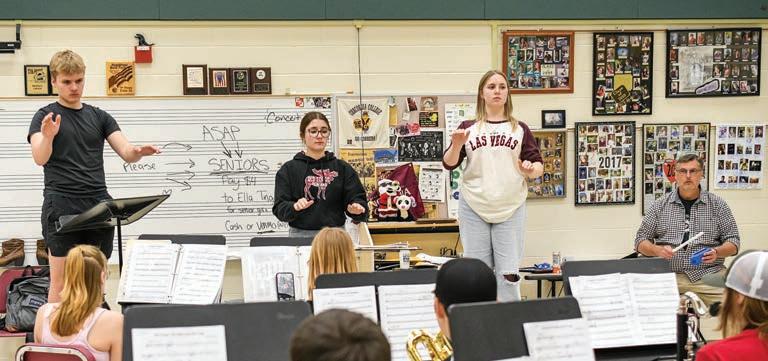
“He’s got a unique way of relating to peers,” Derek adds. “The kids look up to him.”
Both Ella and Reed became interested in being drum majors through friends who had done it. Elizabeth says she auditioned because “I wanted to see what I have to offer.” As a junior, she is gaining experience that will fill a leadership gap next year.
All three believe that things are farther along than they were last year at this time. Reed says the toughest part comes after the band members know the music, know how to march, and then start learning the choreography, which happens at the end of May.
“It’s a huge jump,” he says, “but it’s important to stay calm or things can go wrong fast.”
Elizabeth says there’s a lot of stress, and while marchers are learning the choreography, they may forget the music, but commitment and hard work pay off.
It’s a lot to be doing at one time – a lot to be learning in a short time.
Ella says she knows things will be difficult and messy at first, but everything will turn out okay. The hours of practice will be worth it when they march through their audiences and are greeted with cheers and applause. ■








Northwoods Writers Conference at Bemidji State
June 24-29
Bemidji State University
Bemidji Area Church
Musicians Recital
June 26
Evangelical Free
Fishing Has No Boundaries
June 29
Lake Bemidji
Music Under the Pines: Dean and Peggy
June 30
Lake Bemidji State Park
Bemidji Area Community Band Concert
June 30
On the lawn south of Bangsberg Hall (indoors if inclement weather)

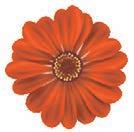


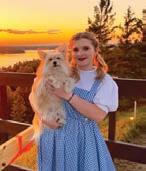
Unicon
Spectators
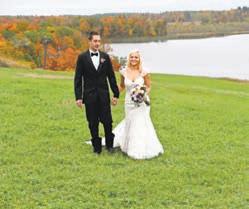






Bemidji Jaycees
Water Carnival
July 3-7
Bemidji
Babe’s Burnout Car Show
July 12-13
Sanford Center

Unicon 21 (Unicycle World Championships)
First City Cruise In (Car Show)
Lueken’s Village South
Watermark Art Festival (Art in the Park)
Downtown Bemidji

Bemidji, First City on the Mississippi

Revisit your childhood and discover the “Antiques Capital of The North” Explore a vast array of treasures in our 7,000 sq. ft. store!


“The Importance of Being Earnest”
July 25-28, 31-Aug. 3
Paul Bunyan Playhouse (Chief Theater)
Anishinaabe Art Festival
July 26-27
Bemidji State University, Hobson Memorial Union
Lake George Blueberry Festival
July 26-28
Lake George
Follow the Yellow Brick Road
July 27
Buena Vista Ski Area
Blackduck Woodcarvers Festival
July 27
Blackduck Wayside Park
VBS: Start the Party
July 28-31
Evangelical Free Church Bemidji
Sanford Health Taco Fest for United Way
July 31
Lake Bemidji Waterfront
Lake Bemidji Dragon Boat Festival
July 31-Aug. 3
Lake Bemidji Waterfront
Clearwater County Fair
July 31-Aug. 4
Bagley
AaronLewis:TheAmerican PatriotTour | June30th


Lake Itasca Family Music Festival
Aug. 2-4
Lake Itasca Region Pioneer Farmers
First City River Duck Race
Aug. 3
Mississippi River between lakes Irving and Bemidji
QFM Radio’s 30th
Anniversary Celebration Concert featuring TobyMac Aug. 4
Sanford Center
Beltrami County Fair
Aug. 7-11 County Fairgrounds in Bemidji
“The Pirates of Penzance”
Aug. 7-11, 14-17
Paul Bunyan Playhouse (Chief Theater)
Sanford Niimi’idiwin (Powwow)
Aug. 8
Lot near Sanford Bemidji Medical Center
Star Monster Aug. 10
Sanford Center
Backwoods Bash Aug. 17
Blackduck
Forestedge Winery Art Fair Aug. 17-18
Laporte



Location: 16914 North Entrance Drive, Lake Itasca, Minnesota
Admission: $15 Daily/ Weekend Pass, Children under 12 - FREE Camping: $30/Camper/ Weekend
FRIDAY
SATURDAY
SUNDAY
Breakfast ������6:30 am Parade ���������������1 pm
Babe’sBurnoutCarShow: July12&13th
AaronLewis:TheAmerican PatriotTour | June30th

Babe’sBurnoutCarShow: July12&13th

Unicon21:WorldUnicycling Championships | July14-26th

TobyMacLIVE: August4th
Unicon21:WorldUnicycling Championships | July14-26th

TobyMacLIVE: August4th
StarMonster:Dimensions | August10th

StarMonster:Dimensions | August10th

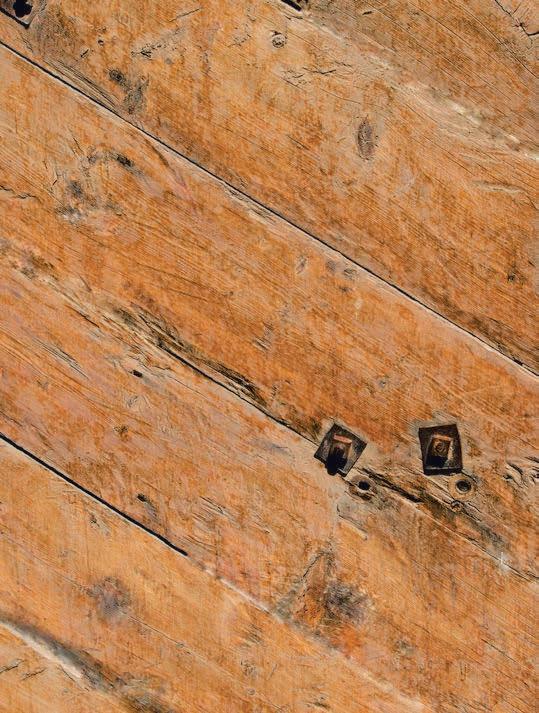
Caramel Rolls, Coffee and Orange Juice ������������6:30 am Tractor Ride ������9 am
Parade ���������������1 pm
Supper ��������������5 pm
Country Gospel Music Show
Kid’s Pedal Tractor Pull �����2 pm (approximately) Supper ��������������5 pm Country/Old Time Music Show ����7 pm
DAILY EVENTS
Breakfast ������6:30 am Worship �������������9 am Parade ���������������1 pm Old Time Tractor Pull after the Parade
Log Handling/Loading, Lumber Sawing/Planing, Threshing & Grain Handling, Shingle & Lath Making, Demonstrations, Grain Grinding, Log Sawing, Blacksmithing, Arts & Crafts, Railroad in Operation, Model Engines & Machines, Tools, Tractors, Vehicles, Gas/Steam/Diesel Engines, Machinery, Broom/Birdhouse/Sign Making, Flea Market & More!



“How do we know you’re going to stick with this? How do we know that you’re not going to do this for a couple of years and disappear?”
Those were questions former Bemidji Mayor Doug Peterson asked when Al Belleveau presented the idea of creating a display of art sculptures on the city’s downtown streets.
Twenty-five years later, those questions have been answered.
The Bemidji Sculpture Walk had a record 43 applications from artists this year, and 16 new sculptures were selected. They join several pieces that
are permanently on display. The new sculptures were installed in May by a small group of dedicated volunteers, including Al.
“The Sculpture Walk has benefited the community,” Al said. “It has drawn people to our town. ‘If this town puts sculptures on the street this must be a pretty hip town. I think I’d like to live here.’ I’ve had people tell me that.”
The Sculpture Walk was developed by a team of volunteers working with the Bemidji Community Arts Center (now the Watermark Art Center). The original theme of the project was “Minnesota:
its people, its diverse culture, its legends and its natural beauty.”
It was patterned after a similar project called Art on the Corner in Grand Junction, Colo. Until recently, few other communities had sculpture walks, but that has changed.
“One of our challenges is there are so many sculpture walks now,” said Dave Close, president of the Bemidji Sculpture Walk board. “For 20 years we were sort of special. But I get calls now every week from cities that want to start a sculpture walk and want my help.”
Embracing art
Al said the local project has been embraced by the Bemidji community.
“Over the years Mitch Blessing and I basically ran it,” he said. “We’d switch off every other year. We were always trying to get other people involved in it, and we have. If I went back and counted there’s maybe been 60 to 80 people on the board over the years.”
Al said that some stay for a few months and others stay for a few years.
“I always wanted other people to be in leadership because other people have good ideas, too. It’s not Al’s thing, it’s a community thing,” he added. “The community has stepped up over the years and granted us support with money and labor. And the city has helped us when we need machinery to move things, and with insurance.”
One of those who became involved in a big way is Tim Nelsen. He moved to Bemidji in 2000, fell in love with the Sculpture Walk and became a sculptor himself because of it. He has had several of his pieces on display over the past few years.




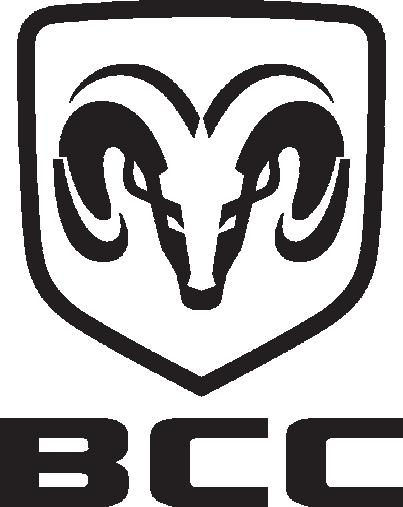




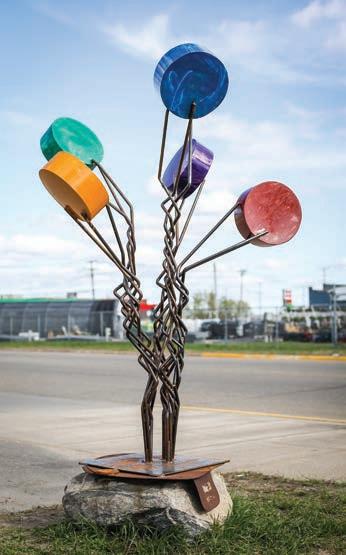


“The walk was immediately my favorite part of town. I had never sculpted before, but it was definitely an inspiration for me to get into it.”
- Tim Nelsen


“The walk was immediately my favorite part of town,” Tim said. “I had never sculpted before, but it was definitely an inspiration for me to get into it. I met Al, and it sort of blossomed from there. It’s probably always going to be in my blood as long as I’m here.”
Tim also has had sculptures on display in Wisconsin, Iowa and South Dakota.
This year, two of his new pieces have been installed in downtown Bemidji. One is a life-size black bear that weighs about 500 pounds. It’s made of all kinds of recycled metal objects, and Tim says it carries an important message.
“I don’t usually do a sculpture with a message, but this one has a message behind it,” he said. “As I was making this I read an article about how black bears’ habitat was disappearing around Minnesota. So he’s covered in all kinds of chains and all kinds of things as a symbol of the chains that we’ve placed upon the bears, like taking away the forests.”
Tim’s second piece is a Flying V Guitar, the kind made popular by rockers Eddie Van Halen, Keith Richards and Tom Petty.

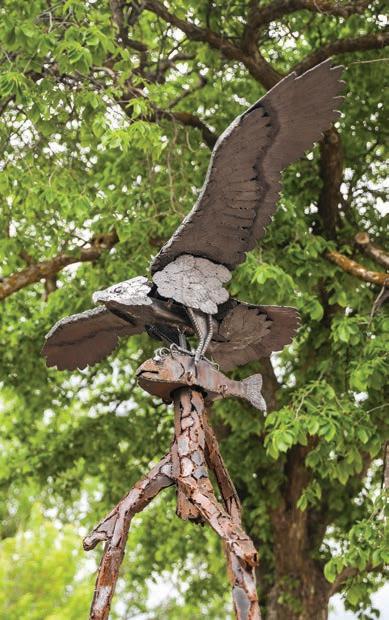


titled “Spirit
was located at the southeast corner of Third Street and Beltrami Avenue in 2020. Pioneer file





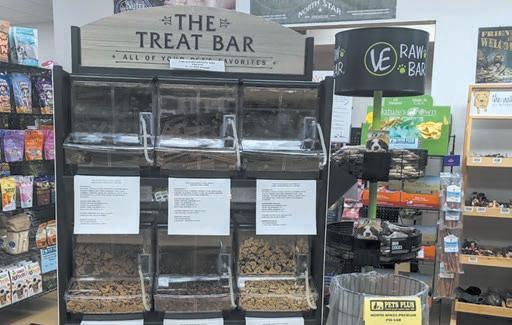



“The Flying V was really popular in the 1980s when I grew up,” he said. “I did my only little take on it, put actual wings on it. I enjoyed ’80s guitar music, and that’s about as musical as I get.”
Tim’s Gibson guitar sculpture, installed in 2021, is also on display. It has been purchased by a family in memory of a loved one and has been moved near the Northwest Minnesota Foundation on Third Street.
Like many of the other sculptors, Tim gets a kick out of watching people meandering through downtown and enjoying the sidewalk art.
“When you make these things it’s a really solitary thing,” he said. “You spend a lot of time making things by yourself. You never really get any feedback, so it’s kind of nice to see people looking at them. It’s rewarding.”
Dave knows community members and tourists alike are enamored with the sculptures.
“We argue sometimes about whether it’s an art exhibit or an attraction,” he left off. “I contend it’s an attraction. People should take pictures of it. They should laugh about it. They should share and post pictures.”
And as the Bemidji Sculpture Walk celebrates 25 years, those questions about its longevity can be put to rest. ■

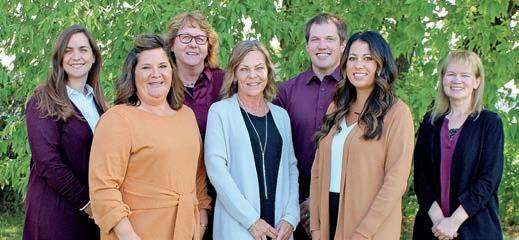







As the seasons change and temperatures start to warm up, there’s nothing better than a refreshing cocktail to welcome the summer vibes. For this issue of inBemidji, Larisa and Annalise have put together a collection of fun and flavorful recipes to keep you cool all season long. From fruity sangrias to minty mojitos, we hope you enjoy mixing up these delicious favorites.




INGREDIENTS:
6
8 ounces
4 ounces
1 lime / sliced for garnish
1 pineapple / wedged for garnish
INSTRUCTIONS:
Fill a highball glass
the way with ice. Add in the coconut rum and pineapple juice, then top with the cranberry juice. Serve with a lime slice and pineapple wedge. Stir before enjoying.

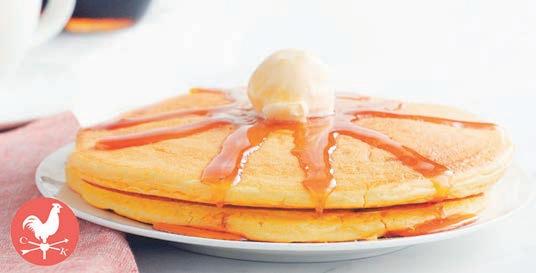



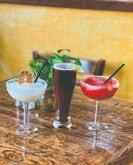


INGREDIENTS:
½ pound fresh strawberries, hulled and quartered
3 ounces raspberries
3 ounces blueberries
3 ounces blackberries
¼ cup granulated sugar
1 750 mL bottle Sweet Red Wine ¼ lemon, sliced
INSTRUCTIONS:
Place berries in large pitcher, sprinkle with sugar, and stir to combine. Allow the berries to soften and release their juices for about 30 minutes. Pour wine into pitcher, add lemon slices. Stir and refrigerate until ready to serve.



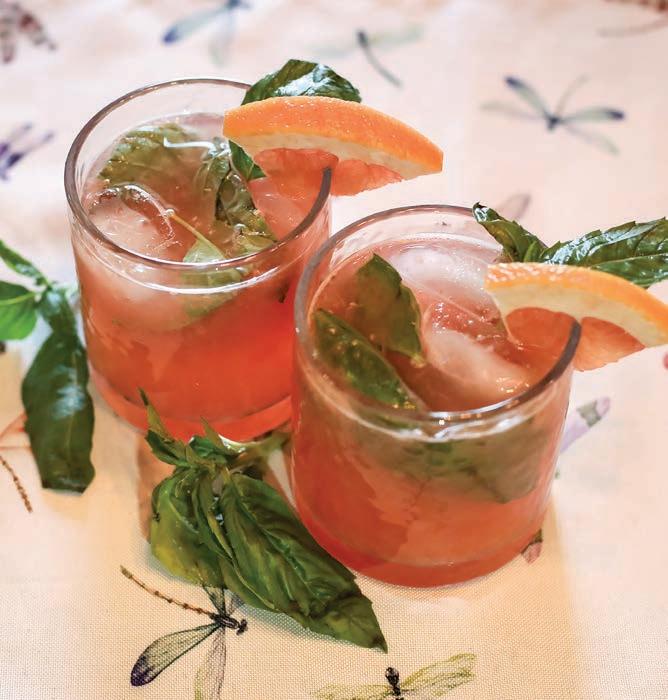


INGREDIENTS:
4 ounces freshly squeezed pink grapefruit juice
2 ounces freshly squeezed lemon juice
4 ounces of gin
3 ounces simple syrup
Generous handful fresh green basil
INSTRUCTIONS:
In the cup of a cocktail shaker, add the lemon juice. Carefully rub the fresh basil between your palm and add it to the shaker cup. If you don’t have a cocktail shaker, you can use a large mason jar with a lid and a hand held kitchen strainer. Gently muddle the basil, releasing the essence. Add the pink grapefruit juice, simple syrup and gin.
Add a handful of ice to the shaker, close and briskly shake your cocktail for 30 seconds. Fill your glass with ice and using a strainer strain the drink into the glass. Garnish with grapefruit rounds.




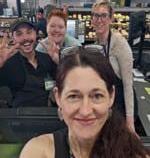







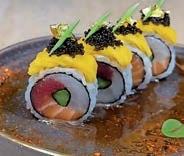

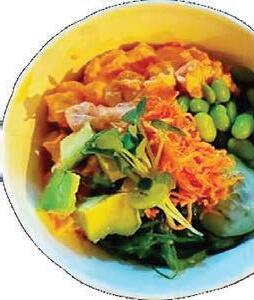



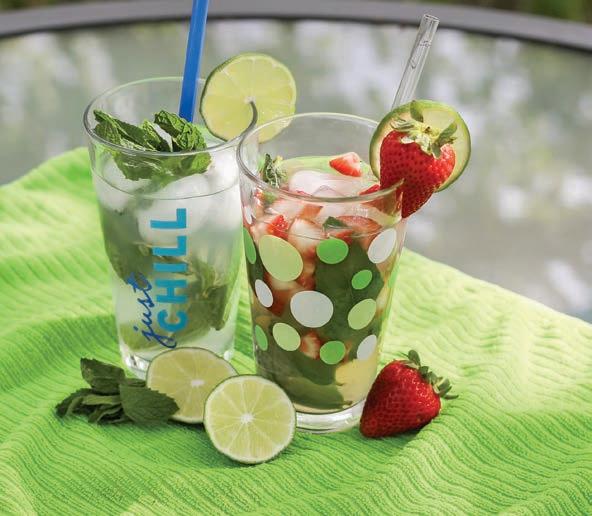
INGREDIENTS:
10-12 mint leaves
2 limes, cut into 8 pieces
3 ounces simple syrup
4 ounces white rum
8 ounces club soda
1 cup ice
½ cup fresh chopped strawberries - optional
INSTRUCTIONS:
Pour rum into a tall glass and use spoon or muddler to muddle the mint leaves, add chopped strawberries if you’re using them, squeeze juice out of lime wedge then add to the glass, top with simple syrup, ice and club soda. Stir to combine. Garnish with a whole strawberry, lime wedge and sprig of mint.
INGREDIENTS:
1 750 mL bottle champagne or sparkling white wine
1/2 cup white rum
1/2 cup peach juice
3 cups frozen fruit or frozen fruit blend of your choice
INSTRUCTIONS:
Combine all ingredients in a pitcher or carafe and stir all ingredients together. You can serve immediately or for a more intense fruit flavor let it sit for a few hours in the refrigerator.











AGE: 74
OCCUPATION:
Retired dentist, pilot and flight instructor
WHERE WE FOUND HIM: StorySLAM at Bemidji Brewing
+ Did you grow up in Bemidji?
I was born in Little Falls, then my family moved to Centerville and Sauk Centre. Mostly, I lived as a kid in Hutchinson until the end of eighth grade. And then our family fell on some misfortune.
+ Misfortune? My dad was drinking, and we had a little sister, Kathy, who was severely disabled from birth. Mentally, she stayed about six months old. She couldn’t sit up. Couldn’t speak. She wasn’t supposed to live past the age of 6. My parents tried to keep her at home, but eventually, they had to give her up to the state –that’s what it was called at the time. I’m writing a memoir about it, “My Secret Sister.”
+ That sounds tough. It was a black mark on us. People looked down on us for sending her away and for my father’s behavior. And we were having financial problems. That’s when we moved to Bemidji – in 1964 when I was in ninth grade. We didn’t have to leave town, but it was a way to start over.
+ Was the move hard on you? I had it so great in Hutchinson. I was a basketball player and I had a girlfriend and I thought I was going to live in Edina and have four kids and a swimming pool. And then we moved. And I woke up the morning we moved, writing a five-page letter to my girlfriend, and we’re living in a little house with a space heater. Two weeks later, my girlfriend sent me the first “Dear John” letter of my life. I felt like I’d gone from the cool crowd to the school nerds.
+ That’s tough on a kid. In the fall of 1963, before we moved, I had shot this gigantic deer
up by Grand Rapids where my grandfather had a cabin. I get my picture on the front page of the Hutchinson Leader. Two weeks later, Kennedy was shot. My parents decided they had to send Kathy away. I went from this great life to, by spring, having my dad go away to treatment, having my sister sent away, having no money. By the time I was a senior, I was playing football and had friends here. But it took a while.
+ And you ended up sticking around. We all stayed here. I have two sisters not much younger than I am and they’re still here, too.
+ Bemidji’s best-kept secret? It’s fairly inexpensive, but you get a high quality of life. You get nature, quiet, clean water.
+ What might I be surprised to learn about you? I’m a health nut, but once in a while, I smoke a cigar.


+ How are you a health nut? I’ve been a bodybuilder since I was 12. I was actually Mr. Minnesota in 1983. When I was 12, I checked out a book at the library called “The Book of Strength.” I was in the midst of this crisis in eighth grade –also, I liked the neighbor girl and she said I was chubby. And I found this inspirational book that spoke to me in ways that someone else may not see. It said, “If you lift weights hard and do what I say, in four years you’ll have a bodybuilding magazine physique.” I started eating well, studying nutrition, working out, running. It was one of my escapes. By 17, I came in fifth in Mr. Minnesota. It took me another 16 years to win it.
+ Four things you love? The Rocky Mountains – backpacking and hiking out there. That’s No. 1. I’ve probably hiked 1,000 miles out there throughout the years. No. 2, good books. No. 3 would be music. I really like to
listen to a lot of music. And No. 4, flying. When you first take off in a plane, it’s like being a bird.
+ What do you fly? A Cessna 172, but I used to fly larger freight planes for Bemidji Aviation. That feeling of freedom. There’s nothing like it.
+ Last musician you listened to? Leonard Cohen. Just this afternoon I had him cranked up. He’s a favorite.
+ Favorite book? It used to be “Catcher in the Rye” by Salinger, but two years ago I took a seminar from Joyce Maynard and learned that Salinger was creepy and abusive. So I’ve moved “Catcher in the Rye” way down the list. Now I’d say Márquez’s “One Hundred Years of Solitude,” “Cold Mountain” by Frazier and “To the Lighthouse” by Virginia Woolf.
+ One lesson you’ve learned? People are more diverse in their interests than people




think. Even though I’m pretty liberal, I like auto racing. I have some friends in town who are pretty conservative, and I like to befriend them. Even if I disagree with a lot of the stuff they think, I like to know why. We usually have more in common than we think we do.
+ I met your girlfriend (Cindy Detschman) earlier, too. How did you meet? Cindy and I are a product of COVID. She was bartending at Sparkling Waters. They’d stopped Martini Mondays, so she called friends who wanted to continue Martini Mondays at her house – and I was in that group. She has four daughters and nine grandchildren. She’s into cooking and recipes and makes beautiful, elaborate meals.
+ Biggest adventure? Going to the Katmai Peninsula in Alaska. I took a tour when I was out there, and it was so amazing that I came back and did it again. You take a

big seaplane, and you look down, and it looks like a field of cattle below you — but it’s big grizzlies, Kodiaks. You land, get out of the plane and walk out on this embankment in this meadow. The guide says, “No loud noises or fast movements, and we’ll move as a group.” You’re in this small area and there’s 15 to 20 big grizzlies there. When I went there the first time, I thought it had to be a dream.
+ Scariest moment? I was landing a freight plane into St. Cloud in a thunderstorm. I was coming from Minneapolis, and before I left, I’d said, “It looks like a storm.” But I was told, “You still have visibility.” So I left, but it was getting worse. I had to do an instrument approach. That’s when you can’t see anything, you look out the windows and it’s black like you’re in a closet. And I’m coming in and it’s just black out. I reach for the throttle and all of a sudden it goes
from black to seeing green grass – and I was where I was supposed to be. That was a deep-breathing moment.
+ Tell me about being a dentist? I was a dentist from 1978 to 2014, then I sold my practice and I went to work for the Northern Dental Access Clinic. Jeanne Larson started this clinic in the early 2000s and now it’s the biggest dental office in town. The best years of my dental career were spent there. It has private and government grant support and operates efficiently, so it’s able to help patients on a sliding fee scale. The six or seven years I worked there were so rewarding, providing care to people who could not otherwise afford it.
+ Do you miss it? What I liked about dentistry was the people. And I still get that. I’m still on the board of the Northern Dental Access Clinic, and I’m involved in the local arts








community with poetry slams, story slams, a writers’ group. Bemidji in some ways is like Key West in that it’s isolated, everybody knows each other and it’s intensely artistic and diverse – but much, much less expensive!
+ You spend a lot of time in Key West? I’ve been going to the Key West Literary Seminar annually since 1987. In 2007, the theme of the seminar was travel writing. And I like that kind of writing. I thought, “I can do this.” I investigated how to do a self-published book, put it on Amazon and called it “Key West Explained.” I was selling 100 copies a month. I think I sold 2,000 copies.
+ Best advice you give? Be kind and practice grace. As I get older, I try to do that more. Follow your heart and your passions. That’s very general, but it’s what I’ve done. And have a curiosity about other people. ■







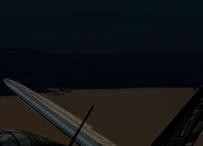



The summer season would not be complete without the Bemidji Jaycees’ Annual Water Carnival, complete with carousels and camaraderie. Can you spot 6 differences in this photo from last year’s event?





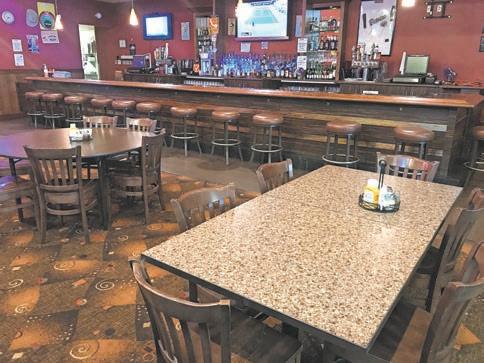


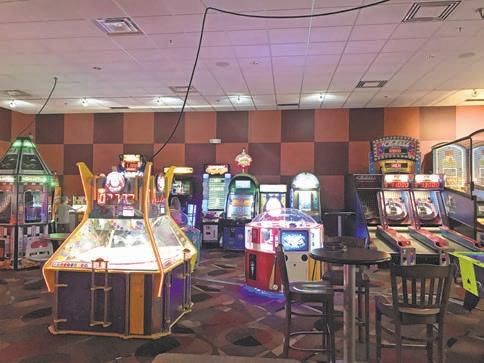




Cartons, plastic bags, film and wrap, plastic foam; Styrofoam™, food waste, paper cups and plates, glass dishes, drinking glasses, window glass and ceramics, trash, containers that held hazardous products; oil, antifreeze

• Mail, office and school paper
• Magazines and catalogs
• Newspaper and inserts
• Phonebooks
• Empty Water, soda and juice bottles
• Milk bottles
• Ketchup and condiment bottles
• Dishwashing and detergent bottles
• Shampoo, soap, and lotion bottles
• Cardboard
• Cereal and cracker boxes
• Yogurt, pudding and fruit cups
• Margarine, cottage cheese and other containers
• Shoe boxes, gift boxes, electronics boxes Metal
• Food and beverage bottle and jars

• Produce, deli and take out containers
• Food and beverage cans